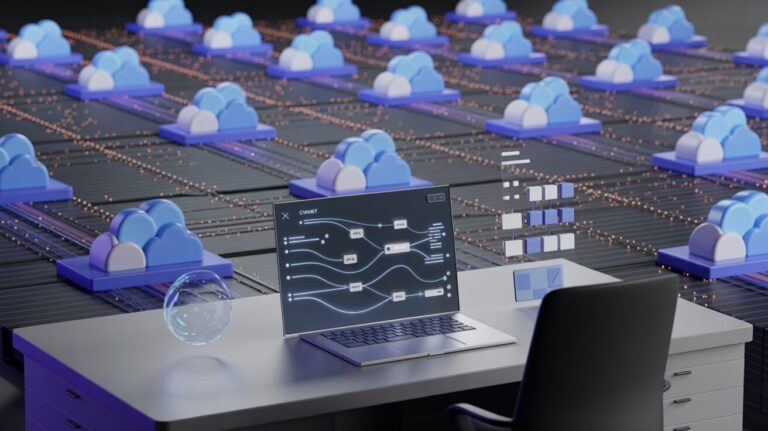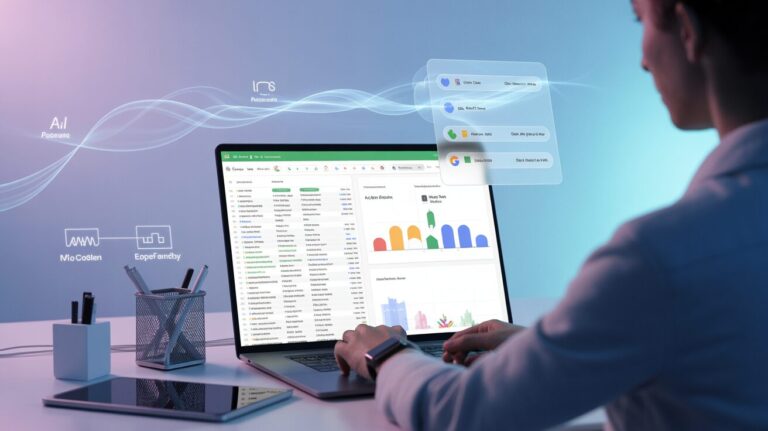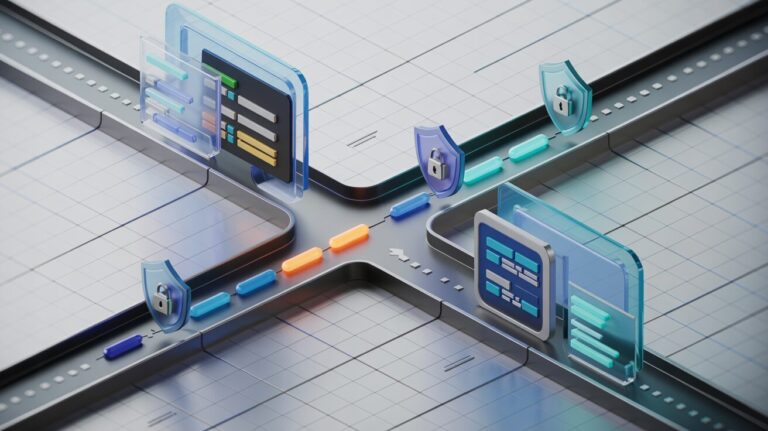Table Of Contents
- Understanding AI Drift: The Silent Threat to Your AI Applications
- The Impact of Unmonitored Drift on Business Outcomes
- Traditional AI Drift Monitoring Approaches and Their Limitations
- The No-Code Revolution in AI Monitoring
- Implementing Drift Monitoring Without Writing a Single Line of Code
- Best Practices for Effective No-Code AI Drift Monitoring
- The Future of AI Drift Monitoring for Non-Technical Teams
- Conclusion: Empowering Everyone to Maintain AI Excellence
In today’s fast-paced business environment, artificial intelligence has become a cornerstone technology across industries—from healthcare and finance to content creation and customer service. But there’s a lurking challenge that many organizations face after deploying their AI applications: model drift. This phenomenon occurs when AI models gradually lose accuracy and reliability over time as real-world data evolves beyond the patterns they were originally trained on.
Traditionally, monitoring and addressing AI drift required specialized data science expertise and extensive coding knowledge, creating a significant barrier for many businesses. The technical complexity of implementing drift monitoring systems has often meant that smaller teams, non-technical professionals, and resource-constrained organizations struggle to maintain the performance of their AI solutions.
But what if there was a way to monitor AI drift without writing a single line of code? This guide explores how the emergence of no-code platforms is democratizing AI maintenance, allowing anyone to ensure their AI applications remain accurate and effective over time—regardless of their technical background.
AI Drift Monitoring Without Code
Keep your AI applications accurate & reliable over time
What is AI Drift?
Data Drift
When input data’s statistical properties change over time (e.g., new terminology emerging that your AI doesn’t recognize)
Concept Drift
When relationships between input and output variables change (e.g., factors influencing customer decisions shifting)
Impact of Unmonitored AI Drift
Diminished Accuracy
AI makes more errors and provides less relevant responses
Poor User Experience
32% of customers leave after just one bad experience
Financial Loss
AI applications can lose 10-25% of ROI within first year
No-Code Monitoring Revolution
Visual interfaces now make complex drift detection accessible to everyone, regardless of technical background
Visual Analytics
Easy-to-understand data visualizations
Automated Alerts
Get notified when drift occurs
User-Friendly
Simple drag-and-drop interfaces
Implementing No-Code Drift Monitoring
Connect Your AI Application
Point the platform to your AI’s API endpoints or use pre-built integrations
Select Relevant Metrics
Choose pre-configured templates based on your AI’s purpose
Configure Alerts
Set thresholds and choose notification channels (email, Slack, etc.)
Monitor & Respond
Use dashboards to track performance and respond to alerts
Best Practices
Establish Baselines
Observe normal conditions before setting alerts
Focus on Business Metrics
Prioritize metrics tied to business outcomes
Layer Multiple Approaches
Monitor inputs, performance, and outputs
Democratizing AI Management
No-code monitoring shifts responsibility from specialized technical teams to the business units who use AI daily, creating more responsive, business-aligned applications.
Understanding AI Drift: The Silent Threat to Your AI Applications
AI drift is a fundamental challenge in machine learning operations that occurs when the statistical properties of the environment an AI operates in change over time, causing the model’s predictions to become less accurate. Think of it as the gradual misalignment between your AI’s understanding of the world and the actual world it’s operating in.
There are primarily two types of drift that affect AI systems:
Data Drift
Data drift happens when the input data’s statistical properties change. For example, if you’ve built a customer service chatbot trained on typical customer queries from 2020, it might struggle with new terminology, products, or concerns that emerge in 2023. The distribution of input data has shifted, but your model remains fixed in its understanding from the past.
Concept Drift
Concept drift occurs when the relationship between input variables and the target variable changes. For instance, the factors that influenced purchasing decisions before a global economic shift might differ significantly afterward. Your predictive models may still receive similar input data, but the underlying decision patterns have transformed.
Both types of drift can occur gradually (incremental drift) or suddenly (sudden drift), and they’re inevitable in most real-world applications. The dynamic nature of human behavior, market conditions, and global events ensures that the environment your AI was trained in will eventually differ from the one it operates in.
The Impact of Unmonitored Drift on Business Outcomes
When AI drift goes undetected, the consequences can be significant and far-reaching:
Diminished accuracy is the most immediate effect—your AI begins making more errors, misclassifications, or inappropriate responses. For content creation AIs, this might manifest as outdated references or misalignment with current brand guidelines. For decision-support systems, it could mean recommendations based on outdated patterns.
Customer experience often suffers next. As your AI chatbot or virtual assistant provides less relevant answers, customers become frustrated. Studies show that 32% of customers would stop doing business with a brand they loved after just one bad experience. When your AI is customer-facing, drift directly impacts your relationship with your audience.
The financial implications follow shortly after. McKinsey research indicates that AI applications that aren’t properly maintained can lose 10-25% of their initial ROI within the first year. For smaller businesses or content creators relying on AI tools, this performance degradation directly impacts bottom-line results.
Perhaps most concerning is the potential for algorithmic bias to amplify over time. Initial biases present in training data can become more pronounced as drift occurs, potentially leading to unfair outcomes for certain user groups. This introduces both ethical concerns and potential regulatory risks.
Traditional AI Drift Monitoring Approaches and Their Limitations
Conventional approaches to monitoring AI drift have typically involved:
Statistical analysis requiring data scientists to apply complex statistical methods to detect changes in data distributions. This includes techniques like Kullback-Leibler divergence, Population Stability Index (PSI), and Kolmogorov-Smirnov tests—methods that demand specialized knowledge to implement and interpret.
Performance metric tracking involves measuring model accuracy, precision, recall, and other metrics over time to identify degradation. While straightforward in concept, implementing automated performance tracking systems has traditionally required software engineering expertise.
Periodic retraining schedules involve regularly updating models regardless of whether drift has occurred. This calendar-based approach is inefficient, sometimes updating models too late (after significant drift has occurred) or too early (wasting resources when no meaningful drift exists).
Custom monitoring pipelines have been the gold standard but require data engineers to build and maintain complex systems that can detect, alert, and potentially remediate drift issues. These systems typically involve thousands of lines of code across multiple programming languages and frameworks.
The limitations of these approaches are evident:
High technical barriers exclude most business users, content creators, and domain experts who lack coding skills. This creates an unhealthy dependency on technical teams for what should be routine monitoring.
Resource intensity makes comprehensive drift monitoring impractical for smaller organizations, startups, and individual creators who can’t afford dedicated data science teams.
Delayed response times occur as non-technical teams must wait for technical resources to become available to investigate and address drift issues, creating a lag between problem onset and resolution.
The No-Code Revolution in AI Monitoring
The emergence of no-code platforms has transformed how organizations can approach AI drift monitoring. These platforms democratize what was once a highly technical process, making it accessible to a much broader audience of professionals.
No-code AI monitoring platforms like Estha provide intuitive visual interfaces that abstract away the complexity of the underlying statistical methods. Using drag-and-drop components and pre-built templates, these platforms allow users to:
Visualize data distributions over time, making it easy to spot shifts in input patterns that might indicate drift. These visual representations make complex statistical concepts accessible to non-technical users.
Configure automated alerts based on customizable thresholds, ensuring teams are notified when performance metrics or data distributions change significantly. This proactive approach prevents drift from going undetected for extended periods.
Access simplified performance dashboards that translate complex metrics into business-relevant insights. Rather than wrestling with mathematical concepts, users can focus on what matters: “Is our AI still performing as expected?”
The advantages of this approach are substantial:
Empowerment of domain experts to manage their AI applications without dependence on technical teams. The marketing team can monitor their content generation AI, the customer service department can watch their chatbot performance, and the sales team can maintain their lead-scoring models—all without waiting for data science resources.
Faster response times to emerging drift issues mean problems can be identified and addressed before they significantly impact business outcomes. When the people closest to the business problem can directly monitor AI performance, intervention happens sooner.
Reduced operational costs come from eliminating the need for custom-built monitoring solutions and freeing up technical resources for more complex tasks rather than routine monitoring activities.
Implementing Drift Monitoring Without Writing a Single Line of Code
Setting up effective AI drift monitoring without code involves a straightforward process that anyone can follow:
1. Connect Your AI Application
With platforms like Estha, you can connect your existing AI applications through simple integration options. This typically involves pointing the platform to your AI’s API endpoints or connecting through pre-built integrations with common AI services.
For example, if you’ve created a custom chatbot or content generator, you can establish monitoring by simply providing the access details through a user-friendly interface—no different than connecting a new app to your smartphone.
2. Select Relevant Metrics and Drift Detection Methods
Once connected, you’ll select which aspects of your AI you want to monitor. No-code platforms offer pre-configured templates based on your AI’s purpose:
For natural language processing applications, you might monitor semantic shifts in user inputs or changes in sentiment distribution.
For predictive models, you could track the distribution of predictions or the frequency of high-confidence versus low-confidence outputs.
For classification systems, you might watch for changes in the distribution of classes or in feature importance over time.
The platform translates these choices into the appropriate statistical methods behind the scenes, without requiring you to understand the mathematical details.
3. Configure Alerts and Reporting
Establish when and how you want to be notified about potential drift. This typically involves:
Setting thresholds that determine when a change is significant enough to warrant attention. For example, you might want to know if your content generation AI’s output sentiment has shifted by more than 15% from its baseline.
Choosing notification channels such as email, Slack, SMS, or integration with your existing workflow tools.
Determining alert frequency and aggregation to balance awareness with avoiding alert fatigue.
4. Monitor and Respond
With monitoring in place, you’ll receive automated insights about your AI’s performance:
Visual dashboards show trends over time, making it easy to spot gradual drift before it becomes problematic.
Automated reports can be scheduled to provide regular overviews of AI stability and performance.
Alert notifications will inform you when specific metrics cross your predefined thresholds.
When drift is detected, no-code platforms often provide remediation options such as flagging affected outputs for review, temporarily adjusting confidence thresholds, or even initiating automated retraining processes if connected to your training pipeline.
Best Practices for Effective No-Code AI Drift Monitoring
To maximize the value of your no-code drift monitoring implementation:
Establish meaningful baselines before monitoring begins. Let your monitoring system observe your AI under normal conditions for a sufficient period to establish what “normal” looks like before setting alert thresholds.
Focus on business-relevant metrics rather than technical ones. While data scientists might care about statistical distribution measures, business users should focus on metrics directly tied to outcomes—like customer satisfaction scores for chatbots or conversion rates for recommendation engines.
Layer multiple monitoring approaches for comprehensive coverage. Combine input data monitoring (to catch data drift early) with performance monitoring (to identify the impact of any drift that occurs) and output monitoring (to ensure quality remains consistent).
Review and refine thresholds periodically based on experience. Initial threshold settings are educated guesses—adjust them based on which alerts prove actionable versus which ones turn out to be noise.
Document seasonal patterns and expected variations to reduce false alarms. Many businesses experience natural cycles that affect AI performance but don’t represent true drift requiring intervention.
The Future of AI Drift Monitoring for Non-Technical Teams
As no-code platforms like Estha continue to evolve, we can expect several exciting developments in AI drift monitoring:
Automated remediation will become more sophisticated, with platforms not just detecting drift but automatically implementing appropriate countermeasures based on the type and severity of drift detected.
Predictive drift detection will emerge, where systems learn to anticipate drift before it significantly impacts performance, based on early warning signals and patterns observed across similar AI applications.
Contextual drift analysis will provide richer insights about why drift is occurring—connecting changes in AI performance to specific external events, seasonal factors, or business changes.
Cross-functional collaboration features will allow different stakeholders to annotate, comment on, and collaboratively respond to drift issues through integrated workflow tools.
The most significant trend, however, is the continued democratization of AI management. As monitoring tools become more accessible, the responsibility for maintaining AI health will shift from specialized technical teams to the business units and subject matter experts who use these systems daily. This shift promises more responsive, business-aligned AI applications that adapt quickly to changing conditions.
Conclusion: Empowering Everyone to Maintain AI Excellence
AI drift is an inevitable challenge for any organization deploying machine learning solutions in dynamic real-world environments. However, the emergence of no-code monitoring tools has transformed this once highly technical challenge into an accessible process that anyone can manage—regardless of their coding abilities.
By implementing no-code drift monitoring solutions, organizations can ensure their AI applications remain accurate, reliable, and aligned with business objectives over time. More importantly, this approach empowers domain experts and business users to take ownership of AI performance, creating a more responsive and resilient approach to AI operations.
As AI continues to integrate into every aspect of business operations, the ability to maintain these systems without specialized technical resources will become increasingly valuable. No-code drift monitoring isn’t just a convenience—it’s a competitive advantage that allows organizations to scale their AI initiatives sustainably while maintaining consistent performance and quality.
The future of AI isn’t just about creating more powerful models; it’s about making these technologies accessible, manageable, and sustainable for everyone. No-code drift monitoring represents a significant step toward that more inclusive AI future.
Ready to monitor your AI applications without writing a single line of code?
Estha’s intuitive platform allows you to build and monitor custom AI solutions that maintain their performance over time—all through an easy drag-drop-link interface.



